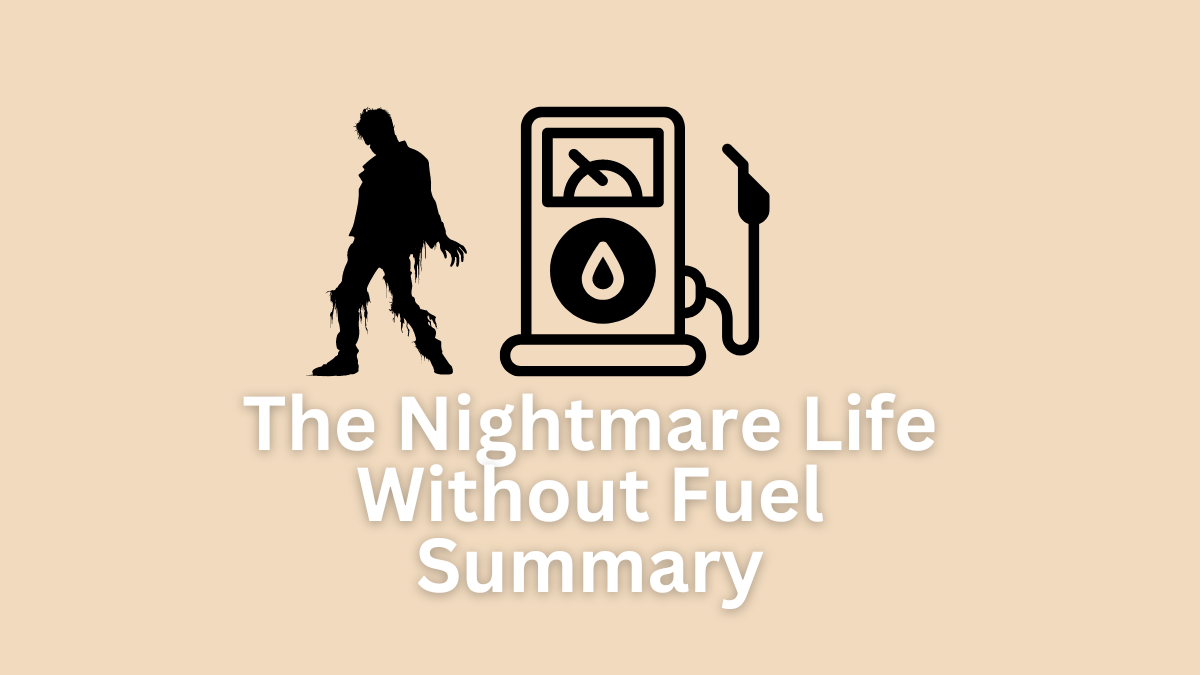The Nightmare Life Without Fuel Summary
Isaac Asimov’s essay, “The Nightmare Life Without Fuel,” presents a chilling vision of a future world grappling with an acute fuel shortage. Using America as a backdrop, Asimov paints a picture of a society on the brink of collapse due to the depletion of natural fuel resources.
The essay highlights both the possible advantages and the dire consequences of such a crisis. In a world where fuel has become a scarce commodity, Asimov foresees several benefits. The air would be cleaner, as fewer vehicles would mean less pollution.
Crime rates would drop since many criminal activities are associated with vehicles. With fewer cars on the road, people would feel safer, even walking late at night.
The reduced use of machinery would also mean that people would rely more on human labor and animals, fostering a sense of community and mutual reliance.
However, the disadvantages far outweigh these benefits. The essay vividly describes a grim reality where the lack of fuel forces society to regress to a pre-industrial state. Without sufficient fuel, industries would halt, and transportation would become a significant challenge.
People would have to walk long distances or rely on overcrowded trains. This regression would lead to a cascade of problems, starting with food production. Without fuel, modern agricultural practices would fail, leading to widespread starvation and malnutrition. This would be especially devastating for infants, resulting in high infant mortality rates.
The health impacts would be severe, with people succumbing to diseases due to inadequate nutrition and harsh living conditions. As modern conveniences disappear, life becomes increasingly difficult and monotonous, focused solely on survival—working, sleeping, and eating. The economic structure would crumble, widening the gap between the rich and poor, as only the wealthy could afford the remaining fuel.
Asimov emphasizes that this bleak future is a direct result of overpopulation, industrialization, urbanization, and the reckless exploitation of natural resources.
He warns that if current consumption patterns continue unchecked, society will be forced to confront these harsh realities. He underscores the urgent need to conserve fuel and develop alternative energy sources to avoid this dystopian outcome.
Read More: Summary of The Poplar Field
In conclusion, “The Nightmare Life Without Fuel” serves as a stark warning about the potential consequences of failing to conserve natural resources. Asimov urges readers to consider the importance of sustainable living and to take immediate action to prevent a future where humanity is thrust back into a primitive, harsh existence.
The essay calls to recognize the finite nature of our resources and the critical need for innovative solutions to sustain modern life.
Read More: Summary of A Worn Path
Important Questions/Answers
What is the main theme of “The Nightmare Life Without Fuel”?
The main theme of the essay is the potential consequences of a fuel crisis on society, highlighting both the advantages and disadvantages of such a scenario.
What are some advantages of a fuel crisis according to the essay?
Some advantages include cleaner air, reduced crime rates, increased community cohesion, and a return to simpler, more natural ways of living.
What are the disadvantages of a fuel crisis described in the essay?
Disadvantages include halted industries, transportation challenges, food shortages leading to starvation, increased infant mortality rates, health impacts from diseases, and widening economic disparities.
What does Asimov attribute the fuel crisis to?
Asimov attributes the fuel crisis to overpopulation, industrialization, urbanization, and the indiscriminate use of natural resources.
What is the essay’s message to readers?
The essay serves as a warning about the urgent need to conserve fuel, develop alternative energy sources, and adopt sustainable living practices to avoid a dystopian future where society regresses into a harsh, primitive existence.
Read Next: Look At a Teacup Summary
